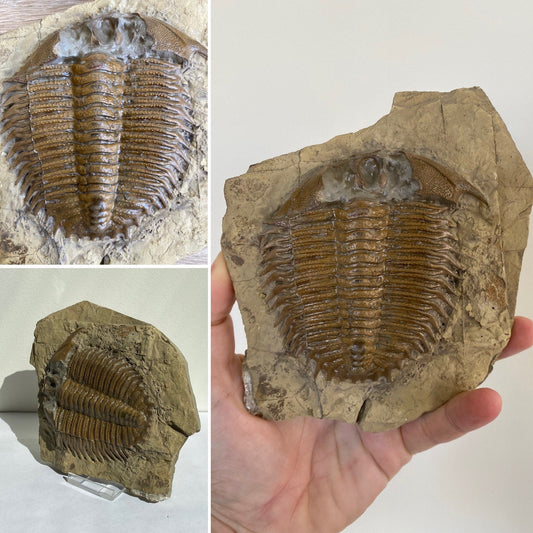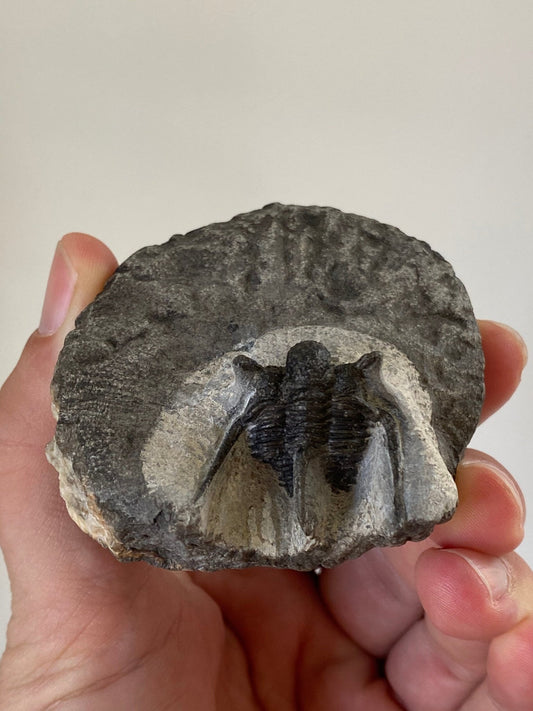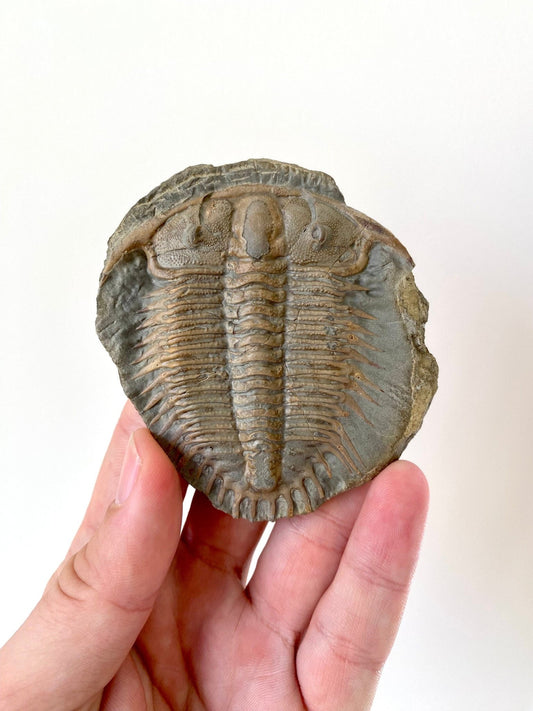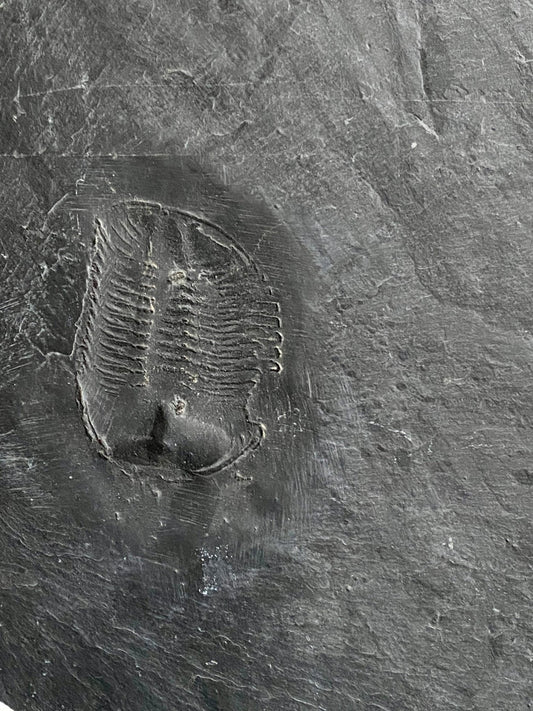Collection: Trilobite fossils for sale
Trilobites are one of the most iconic and diverse groups of extinct marine arthropods that roamed the oceans for nearly 270 million years. These fascinating creatures flourished from the early Cambrian period, around 521 million years ago, until the end of the Permian period, approximately 252 million years ago. Trilobites are renowned for their intricate and varied exoskeletons, which often exhibit remarkable preservation in the fossil record.
-
3.3cm Reedops fossil Trilobite rolled up
Regular price €60,00 EURRegular priceUnit price / per -
3.6cm Reedops fossil Trilobite rolled up
Regular price €55,00 EURRegular priceUnit price / per -
Morocops fossil Trilobite rolled up, Devonian age
Regular price €65,95 EURRegular priceUnit price / per -
Trilobite fossil, Large Damesella Paronai
Regular price €180,00 EURRegular priceUnit price / per -
Trilobite fossil, Cyphaspis Kraidensis
Regular price €79,95 EURRegular priceUnit price / per -
Trilobite fossil Drotops Megalomanicus
Regular price €129,95 EURRegular priceUnit price / per€149,95 EURSale price €129,95 EURSale -
Trilobite fossil from China, Rare Damesella Paronai
Regular price €300,00 EURRegular priceUnit price / per -
Chotecops ferdinandi trilobite fossil (Bundenbach)
Regular price €165,00 EURRegular priceUnit price / per -

 Sold out
Sold outCalymene Trilobite fossil
Regular price €7,50 EURRegular priceUnit price / per -

 Sold out
Sold outLeonaspis sp - Trilobite fossil
Regular price €125,00 EURRegular priceUnit price / per -
Morocops fossil Trilobite rolled up, Devonian age
Regular price €65,95 EURRegular priceUnit price / per
About Trilobites
Let's delve into a detailed description of these ancient arthropods:
Physical Characteristics:
Trilobites had a distinctive appearance characterized by a segmented body divided into three lobes: a central axial lobe and two symmetrical lateral lobes. Their exoskeletons were made of calcite, a mineral that provided robust protection and enabled fossilization. Trilobites varied greatly in size, with some species measuring only a few millimeters while others reached lengths of over two feet. They possessed multiple pairs of legs, typically ranging from 3 to 30 pairs, which they used for locomotion and feeding.
Habitats and Distribution:
Trilobites inhabited a wide range of marine environments, from shallow coastal waters to deep-sea abyssal plains. They were well-adapted to various ecological niches, with some species preferring sandy or muddy substrates, while others thrived in coral reefs or open ocean environments. Trilobites were globally distributed, with fossil specimens found on every continent, providing valuable insights into ancient marine ecosystems and paleogeography.
Feeding and Behavior:
Trilobites were primarily scavengers, detritivores, or predators, depending on the species and ecological context. Many trilobites had elaborate feeding appendages, such as spines and elaborate limbs, which they used to capture and manipulate prey. Some species were filter feeders, sifting through sediment for organic particles, while others were active predators that hunted smaller organisms. Trilobites likely played crucial roles in marine food webs, contributing to ecosystem dynamics and nutrient cycling.
Reproduction and Life Cycle:
Trilobites reproduced sexually, with most species exhibiting dimorphism between males and females. Fossilized specimens often reveal distinctive features associated with reproductive structures, such as genital appendages and egg-bearing structures. Trilobites underwent molting as they grew, shedding their exoskeletons in a process called ecdysis. The frequency of molting varied among species and life stages, with some individuals molting several times throughout their lifespan.
Extinction and Fossil Record:
Trilobites experienced several major extinction events throughout their long evolutionary history, with the most significant occurring at the end of the Permian period, during the largest mass extinction in Earth's history. Despite their remarkable diversity and ecological success, trilobites vanished from the oceans around 252 million years ago, leaving behind a rich fossil record that continues to captivate paleontologists and enthusiasts worldwide.
Conclusion:
Trilobites were extraordinary creatures that dominated Earth's oceans for millions of years, leaving behind a legacy of remarkable diversity and ecological innovation. Their beautifully preserved fossils provide invaluable insights into ancient marine ecosystems, evolution, and paleoenvironmental conditions. By studying trilobites, scientists gain a deeper understanding of the processes that shaped life on our planet and the interconnectedness of all living organisms throughout geological time.
Trilobite fossils for sale






















